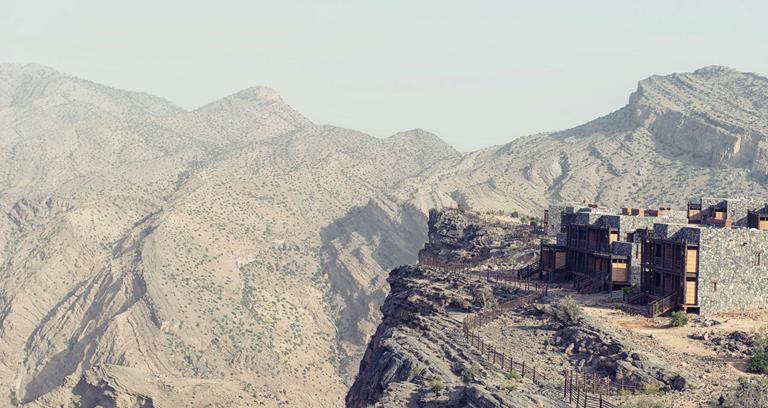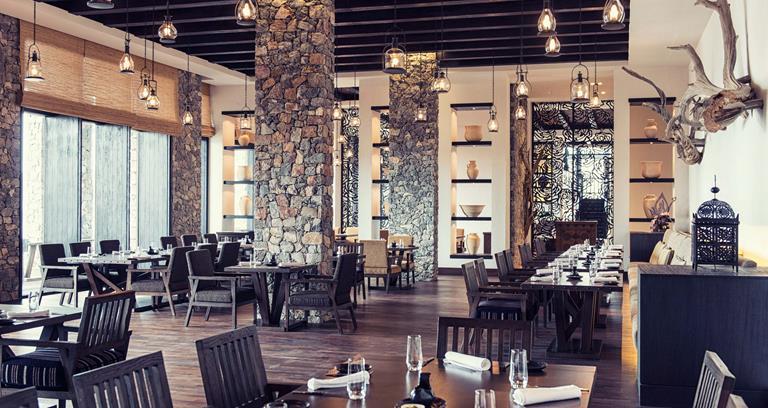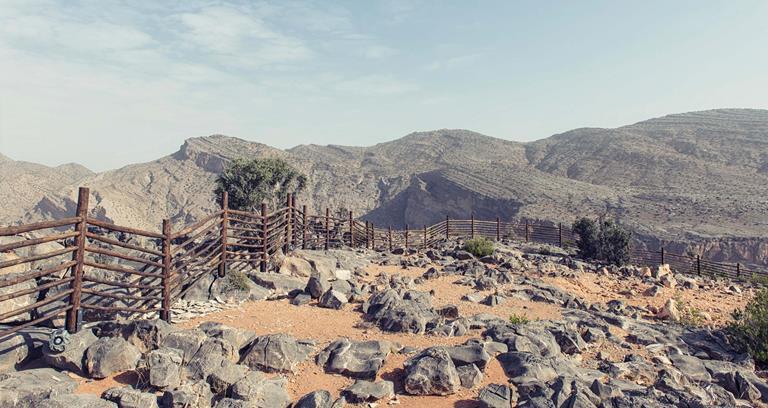Alila Jabal Akhdar
Personal notes from Centurion Magazine's contributors worldwide
Sitting on a plateau more than 2,000 metres above sea level, surrounded by the forbidding, rugged cliff faces of Oman’s interior, there is an almost impossible air of quietude. But then there is much unexpected about Jabal Akhdar. It seems paradoxical that all around there are barren, vertiginous rock faces that seem as inhospitable as any place on Earth, yet the area gives forth an abundance of fruit and other produce. Likewise, one might expect the inhabitants of the countless villages dotted around to be insular, wary of an influx of outsiders that any increase in tourism will bring, but conversely they are extremely welcoming, fiercely proud of their home and its unique nature.
For many, Oman, the reserved sultanate at the southeastern corner of the Arabian peninsula, means one thing: Muscat, the coastal capital city studded with minarets, bedecked with sandy beaches and flush with top-rank hostelries. Until recently what lies in the interior has been something of a mystery. All that is changing as the Omani government opens up the region, encouraging high-end hotel brands to take up the challenge of creating remarkable experiences among some of the most spectacular landscape in the world. The first to try its hand is Alila, which having built a stellar reputation in India and southeast Asia, has embarked on its first foray in the Middle East with the Alila Jabal Akhdar.
The property, designed by UK-based architect Atkins and unveiled in May, features 84 well-appointed suites and two opulent villas sited in buildings spread around the A’roos plateau, endowing each with picturesque views of the pink-hued mountains. Built from stone hewn from the area, the edifices blend seamlessly with the surroundings, while the interiors are outfitted in earth tones, with motifs of the juniper tree and rose petals, two important regional plants, much in evidence alongside works from local artisans. The tranquil nature of the locale is enhanced by a spa, staffed with Balinese- trained masseurs, and an infinity pool that affords extraordinary vistas down a grand canyon that would not be out of place in a John Ford Western.
Yet the temptation to lie back should be resisted, for out in the midst of the mountains there is a great deal to explore. Simply driving around is itself an experience – the final part of the two- and-a-half-hour journey from Muscat is a seemingly endless corkscrew climb. Multiple viewing areas along the roads provide great vantage points to enjoy the full majesty of the incomparable landscape along with terraces of such crops as grapes and roses that give Jabal Akhdar (or Green Mountain) its name. At one such point in the village of A’roos, overlooking the Alila, we are given a taste of the hospitality of the locals – within minutes of our arrival a welcoming party has gathered in the previously unoccupied viewing point. Coffee, dates and fruit are produced as three generations of the residents greet us.
Perhaps the only thing to outshine that warm reception is the altitudinous milieu itself, latticed by dozens of trekking routes. The terrain is harsh – though thankfully the temperatures are considerably cooler at this altitude than those at sea level – but the rewards are even greater. One such track through a dried- out wadi (riverbed) ends in the abandoned village of Sareb. If the journey there is a geologist’s fantasy, getting close up to myriad layers of rocks, some embedded with fossils, then it ends with a fascinating insight into the rarely seen culture of the region. It is possible to climb up and explore the simple stone and wood houses that were still occupied until 20-30 years ago when families moved out to modern hamlets constructed under the government’s progressive social housing plan. The houses of Sujrah, another such community we visit, seem to defy gravity as they cling to the cliff face, yet remarkably some of these are still inhabited.
Such extraordinary accommodation will soon be joined by a series of new hotels, with a handful of major names expected to build in the area. For the moment, the Alila, like Oman’s expansive tourism plans, is something of a work in progress. There is still evidence of the logistical problems of building in such a remote region in the restricted fare available in the hotel’s Juniper restaurant, and the company’s admirable policy of hiring a high percentage of local staff does mean service can be a bit rough around the edges. But any teething problems are put into perspective by the breathtaking environment in which this experiment is set. The main attraction has, after all, been standing in all its splendour for thousands of years.
Date visited: September 2014























